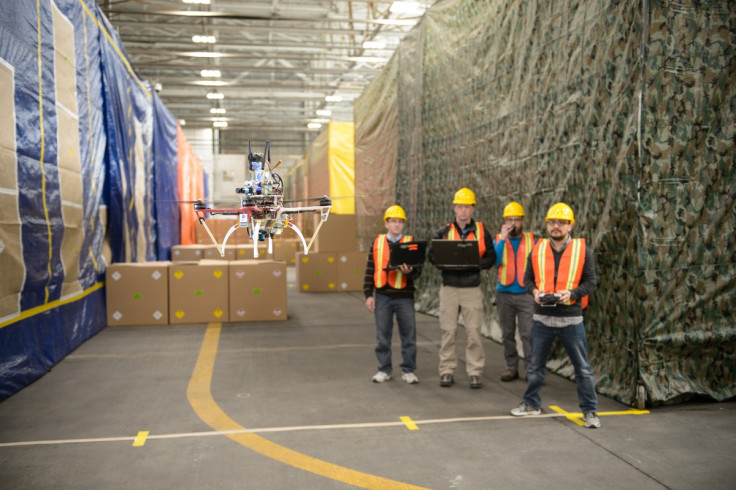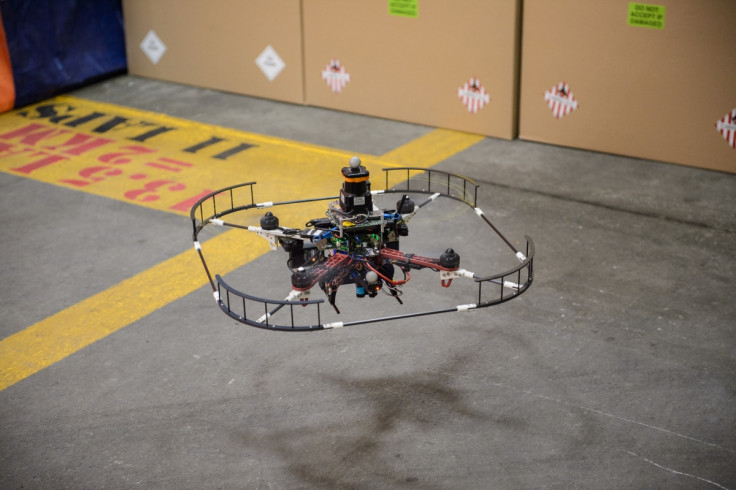Darpa debuts turbo mini drone that autonomously avoids obstacles while zooming at speeds of 45mph

The US Defense Advanced Research Projects Agency (Darpa) has showcased test flights for a new autonomous mini-drone that can travel at speeds of 45mph while dodging obstacles – all on its own.
Darpa's researchers built their quadcopter drones out of commercial DJI Flamewheel 450 airframes, E600 motors with 12-in propellers, and the Pixhawk autopilot software by 3D Robotics. They also designed an unmanned aerial vehicle (UAV) platform with algorithms that were able to get the drones to fly at speeds of 20mps around a cluttered former airplane hangar laden with obstacles.
As part of the Fast Lightweight Autonomy (FLA) programme, Darpa wants to improve a drone's ability to carry out low-level tasks on its own, cutting down human intervention, communications and processing power down to a minimum, with the intent of the drones being able to deal with disaster situations and even military reconnaissance by themselves.
Building super-intelligent drones
The US military's research arm wants to make these UAVs so clever that they don't even need to rely on satellite GPS for geographic coordinates, sensors, or any form of communication from a drone operator, but can independently perform a surveillance task and feed data straight back to first responders or military patrols.
Helping to develop the sophisticated software needed to make the drones this smart are MIT, the University of Pennsylvania, Scientific Systems Company (SSCI) and AeroVironment, and their software was used to control the drones in a test held at the Otis Air National Guard Base, Cape Cod in Massachusetts.
Darpa is continuing to test out the drones and every single test flight sees the UAVs meet an even more challenging obstacle course, in order to offer the UAVs a realistic environment to beat.
Drones still can't perform complex missions on their own

"We're excited that we were able to validate the airspeed goal during this first-flight data collection. The fact that some teams also demonstrated basic autonomous flight ahead of schedule was an added bonus. The challenge for the teams now is to advance the algorithms and onboard computational efficiency to extend the UAVs' perception range and compensate for the vehicles' mass to make extremely tight turns and abrupt manoeuvers at high speeds," said Mark Micire, DARPA program manager.
"Very lightweight UAVs exist today that are agile and can fly faster than 20 metres per second, but they can't carry the sensors and computation to fly autonomously in cluttered environments, and large UAVs exist that can fly high and fast with heavy computing payloads and sensors on board.
"What makes the FLA program so challenging is finding the sweetspot of a small size, weight and power air vehicle with limited onboard computing power to perform a complex mission completely autonomously."
Eventually, Darpa says that it hopes to apply the UAV software to help control ground, marine and underwater systems, where getting a good GPS signal is difficult or even impossible.
© Copyright IBTimes 2025. All rights reserved.






















